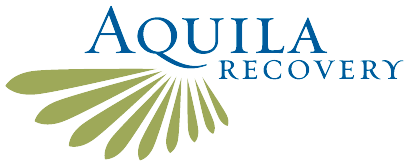 People who struggle with addictive behaviors often succumb to problematic thought patterns in order to justify and continue their behavior. Identifying these thought processes is just the first step in overcoming them; it is also essential to replace them with thoughts and attitudes that are more productive.
People who struggle with addictive behaviors often succumb to problematic thought patterns in order to justify and continue their behavior. Identifying these thought processes is just the first step in overcoming them; it is also essential to replace them with thoughts and attitudes that are more productive.
Cognitive behavioral therapy, or CBT, is a form of training to break free of negative thought patterns. CBT equips participants with life skills to reflect on their own behaviors and amend them over the long term.
Rather than talk therapy, which requires a person to schedule time with a therapist, those who learn the principles behind CBT can practice them in their own lives long after speaking in person with a therapist. Consequently, they can find success whenever a challenging situation arises.
The principle behind cognitive behavioral therapy’s subversion of negative thought patterns comes from cognitive restructuring — here’s what you need to know about how it works.
Cognitive Restructuring: What It Does and How
In a nutshell, cognitive restructuring teaches people how to change how their brains think. To do so, patients practice breaking apart situations in which they find themselves.
First, they must identify a situation that is causing them issues. In the case of addiction, this is commonly a situation in which they feel a compulsion to partake in a substance or to wallow in the hopeless feeling that they will never get better.
Next, cognitive restructuring requires the person to examine their thoughts in this situation. For instance, if a person is overcome with frustration and doubts about their ability to overcome their addiction, they may break their thoughts into statements such as:
“I am not strong enough to do this.”
“I cannot function without the substance.”
“I will never get better.”
Once they have articulated these thoughts, they can use cognitive restructuring to list evidence that disproves them. By doing so, they can identify what is not true in their thought patterns and develop an alternative thought based on the evidence. For example:
“I cannot function without the substance” — “While it is true that I find some tasks more difficult without the substance, I still do laundry, cook, and clean just fine. When I consume the substance, I feel worse afterward.”
Thus, the new, more productive thought becomes, “I can do many more exciting things if I avoid the substance. This lets me pursue my goals and gets me excited for the future.”
Most Common Negative Thought Patterns
Many negative thought patterns can be gradually unwoven using cognitive behavioral therapy and principles such as cognitive restructuring. Some of the most frequent negative views include:
 Overgeneralization — Words like “always” and “never” appear in these thoughts. In reality, it is rare that something is always or never true; instead, there is likely much more nuance and flexibility that you can acknowledge. “I always fail” becomes “I don’t succeed sometimes, but I can try again next time.”
Overgeneralization — Words like “always” and “never” appear in these thoughts. In reality, it is rare that something is always or never true; instead, there is likely much more nuance and flexibility that you can acknowledge. “I always fail” becomes “I don’t succeed sometimes, but I can try again next time.”- Labeling — You may apply labels or descriptors to yourself that are not accurate but shape your perception of yourself and your abilities. Remember to challenge your labels by looking for evidence to the contrary. “I am a failure” becomes “Sometimes I make mistakes, but here is a list of the many things I did right today.”
- Discounting the Positive — It is easy to assume that the good things that happen are accidents that a person does not deserve. Challenge this thought pattern by citing evidence that the good things resulted from your actions and that you do deserve good things. “I don’t deserve this job because I am struggling with addiction” becomes “I have worked hard to develop the knowledge and skills that I have, and I earned this job because of my efforts.”
- Mental Filtering — When a person focuses on one specific event to the exclusion of all else, their perception of reality can become distorted. Remember to look at life in the big picture, too. “I broke my clean streak, and now all that progress is lost” becomes “I successfully overcame my addiction every day for nine months, and one day does not change that.”
Break Free from Negative Patterns with CBT
Addiction recovery is a challenge, but with the right life skills and tools, a person can learn to be more consistently successful. By breaking free of negative thought patterns using CBT, individuals can achieve a lasting recovery that supports their goals and turns their lives into something they are excited about.
The experts at Aquila Recovery Clinic can help you learn and practice cognitive restructuring to reframe the events of your life more accurately. Contact Aquila to schedule a CBT session.
